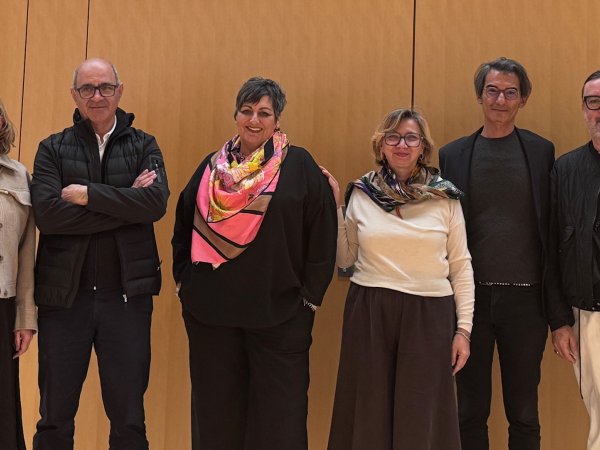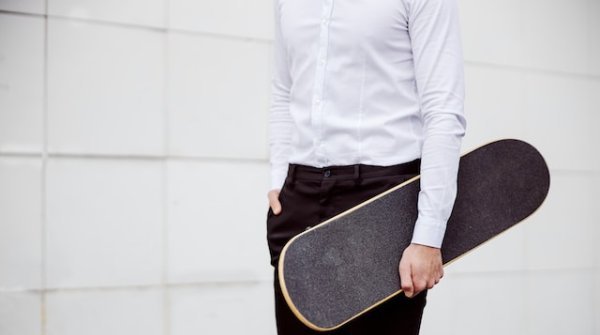What was unanimously clear was that this season isn’t going to wow with any new state-of-the-art developments. Instead, it confirmed that the industry had taken heed in embracing sustainability, as all products had some form of sustainable ingredient or process.
‘This is something positive: people are continuing to make claims for sustainability solutions; this is a very positive point; all the products have some reference to sustainability; this is now a culture,” said Braz Costa, General Manager of CITEVE.
Sustainable processes are featured right through the supply chain. From the fiber, fabric, and finish sectors, each product was proudly linked to a more substantial sustainable source. Ranging from the understated but still valued sustainable in terms of companies using renewable energy to water-saving processes to the more creative elements of innovative fiber content taking on a new direction, as virgin synthetics upped the ante with recycled or bi alternatives. Membranes and coating continued to see the push to cleaner chemistry, with PFAS and PFC-free materials still delivering the protection required.
Waste was used, not just from the textile sector, but also evident in the soft equipment sector, with waste fabrics immersed in nonwovens with a laminate, through to waste products from the food industry pulling on apples, bananas, pineapples, and cherries, all offering unique performances, including anti-odor.
Natural fibers, both established, esoecially cotton and new contenders, highlighted the performance prowess they too can offer in a market where function overrides fashion.
With the jury judging each product via an iPad, it is always a perfect event to discuss developments in the textile sector, directly related to ISPO Textrends applications but also in general. This was done by (see cover picture from left to right) Sophie Bramel – Technical Editor, World Sports Activewear (WSA), Braz Costa – General Manager of CITEVE, Louisa Smith – Textile Trend Consultant, Giusy Bettoni – CEO and Founder, CLASS, Kutay Saritosun – Director of Brand Services and Partnerships Bluesign, Thomas Håkansson – Creative Director and Senior Designer.
“I have felt that innovation has slowed down in the last few years, and this season’s selection of fabrics tends to confirm that in my mind. Innovation is not the high point, but there are some very beautiful fabrics. They look great, and they are all sustainable. You can say that has become the standard. Obviously, it is expected, but it is good to see it is really there,” said Sophie Bramel, Technical Editor, World Sports Activewear (WSA).
“I feel this is a season for which we will have to look further for real innovation. It’s there, but you have to look for it. It is a safe season, with classics that are reassuring and work, and they are now made of recycled nylon and recycled polyester,” she said.
Polyester took center stage in the synthetics arena, with a wide range of variations from recycled; the use of this robust fiber is a sign of the times from a cost point of view. Polyester is like a chameleon; It can change characteristics and performance and comes from a wide range of sources, although soon it won’t be able to come from recycled plastic bottles, as they will no longer be deemed a sustainable feedstock. A cat with nine lives, polyester will foray into new functionality and bio-based feedstock, and it will take a mighty innovation to knock this synthetic fiber offer pole position.
Mono fabrics emerged, bringing mechanical stretch and an easier end-of-life solution. New ingredients included apple, banana, and cherry, bringing a touch of the exotic, with cotton delivering a newly energized bid to gain more ground in the performance sector. Reassuringly good fabrics, switching from conventional to recycled and bio ingredients for synthetics added to the continuing level of performance required for our industry.
The general consensus is that the textile industry has become somewhat stagnant in its offerings. This isn’t to say that there are bad fabrics; it is just highlighting the fact that innovation has been put on hold. Much of the blame for this fixed position is the constant focus on brands’ margins, which are squeezed each season.
“Regarding innovation, it is mostly about the brands' commitment to those materials, so they can be really commercial when you support them. That is what we see lacking. That may be why we have less innovation, as those companies are not supported as much as they could be, so they can scale up and be commercial. Hopefully, we wil.l see more newness in the next couple of seasons,” said Kutay Saritosun, Director of Brand Services and Partnerships Bluesig.
So, where is the innovation? So where is the innovation? It is there, but you have to deep dive to see where the innovation has taken place. It isn’t in new fibers but through next level spinning, new lighter weight fabrics and the clean chemistry that is replacing forever chemicals and reducing the impact on the environment..
The problem, as the jury discussed, is the lack of support from brands. This highlights the recent bankruptcy of Renewcell, the Swedish commercial of the world’s first textile-to-textile processing, which filed for bankruptcy after a year of trading. Multiple reasons have been mulled over: the lack of support from brands, the onus of brands towards their margin, Renewcell's growing too quickly, and much more. However, with textile-to-textile recycling elevated as a future savior in pursuing the circular economy, Renewcell’s bankruptcy was a blow to the industry globally.
“If we talk about a new generation of material, we must first talk about a new generation of business. I think we are going towards a new format where if the values towards ethics towards footprint, at the same time, we have to highlight values as you don’t see the ethical side physically, the impact on the water and the chemical is lower. Still, it is there., and we need to recognize it,” said Giusy Bettoni, CEO and Founder, CLASS.
However, innovation and developments come at a price, and brands have to take some responsibility in supporting new developments and educating their consumers about why a product may have a premium price.
“ It isn’t just about margins, but part of it is us going into a new generation of communication; that does not mean we have to write half a page of everything, but there are ways to say why this garment is different from, if not more expensive, has different values that motivate the consumer to buy it. Unfortunately, these values are sometimes not evident when wearing a sustainable garment. We are so linked that we need to see things to understand - it’s a challenge,” she said.
The jury discussed how innovative new developments are out there, and it is a matter of time before they come through. Traditionally Spring/Summer is a smaller season than Fall/Winter, and interest is already starting for the next season, in the hope that the industry at all levels works as one in scaling up new ideas.
“Regarding sustainability, we are in a difficult place, there is challenge and opportunity, but the results are not there. The innovation is out there, but it needs to scale up. Scaling, implementing, and transferring technology takes some time,” said Braz Costa, adding that we need adaptation from the retailers. “We need another opportunity to be economically possible, so without the movement from both sides, it isn’t possible."
Creative Director and Senior Designer, Thomas Håkansson echoed this sentiment that innovation is out there. “I get the impression it is there if you look into it, I think it is important that we give it time to be there. I think some time is needed. Investors are forced to say we are there, and a longer perspective is needed.”
What shouldn’t be overlooked is that change takes time. The textile industry is one of the oldest industries in the world, dating back thousands of years. Even if we track it back to when it became automated, we are talking 200 years, so change does take time. This edition of the jury meeting has proved that it can change, as the jurors noticed that sustainability is finally featured in all products.
Sophie Bramel reminded us all how long it can take to find a new fiber and bring to market. “In the most recent past, the newest fiber we are using today on an industrial scale is lyocell—research started in the late 1970s. Two major companies, Lenzing and Courtaulds, were working to get that fiber to market—it took 30 years!”
Which brands emerged as winners from this jury meeting? You can find out in Munich at OutDoor by ISPO from June 3 to 5, 2024 at the ISPO Textrends Forum.
 ISPO TextrendsISPO Textrends Jury Meeting for Spring/Summer 2027
ISPO TextrendsISPO Textrends Jury Meeting for Spring/Summer 2027 ISPO TextrendsSustainable materials: trends fall/winter 26/27
ISPO TextrendsSustainable materials: trends fall/winter 26/27
- Awards
- Mountain sports
- Bike
- Fitness
- Health
- ISPO Munich
- Running
- Brands
- Sustainability
- Olympia
- OutDoor
- Promotion
- Sports Business
- Textrends
- Triathlon
- Water sports
- Winter sports
- eSports
- SportsTech
- OutDoor by ISPO
- Heroes
- Transformation
- Sport Fashion
- Urban Culture
- Challenges of a CEO
- Trade fairs
- Sports
- Find the Balance
- Product reviews
- Newsletter Exclusive Area
- Magazine




